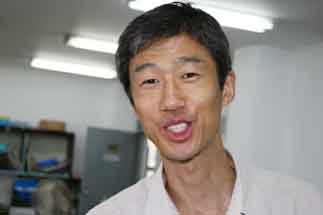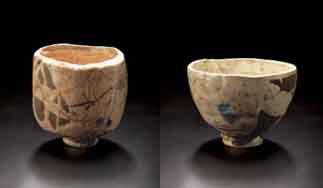With his hands professor mixes two cultures into one cup

Roots in both Korea and Japan surface in Yoo Tae-keun’s pottery. [JoongAng Ilbo]
This week, Yoo opens an exhibit of chassabal, “The New Dream of Yasugadake.” A longtime advocate of further revival of Korea-Japan cultural relations, Yoo will donate all of the show’s profits to teenage exchange programs between the two countries. The exhibition, which opens for six days starting Aug. 1, includes Yoo’s lecture, “The Korean Clan and Japanese Clay,” as well as his slideshow, “How to Build a Traditional Mangdangee Kiln in Mungyeong.”
Yoo’s relationship with Japan began after his undergraduate education in pottery at Kyungil University in North Gyeongsang. Upon graduation, Yoo flew to Japan to pursue graduate studies in traditional pottery at Aichi Prefectural University of Fine Arts.

Chassabal, or traditional Korean teacups made by Yoo Tae-keun. [JoongAng Ilbo]
As Morishita’s protege, Yoo became an associate member of one of Japan’s most prestigious traditional technological art exhibitions. Even after Yoo’s return to Korea, his friendship with Morishita continued. The two even collaborated on building a traditional kiln once Yoo became a professor at Mun Kyung College, the subject of the slideshow in his chassabal exhibit.
Yoo incorporates both his native and adopted cultures in his chassabal by blending clays from Japan’s Nagano Prefecture and Mungyeong into his medium of choice.
“The volcanic ash mixed into the sand of Japanese clay starkly displays black speckles on the white surface of the porcelain,” Yoo explained.
He also incorporates traditional Korean tile patterns and lotus flowers into his work.
He says he hopes his bicultural pottery bestows intimacy to Japanese people.
By Song Eui-ho JoongAng Ilbo [hawon@joongang.co.kr]










with the Korea JoongAng Daily
To write comments, please log in to one of the accounts.
Standards Board Policy (0/250자)